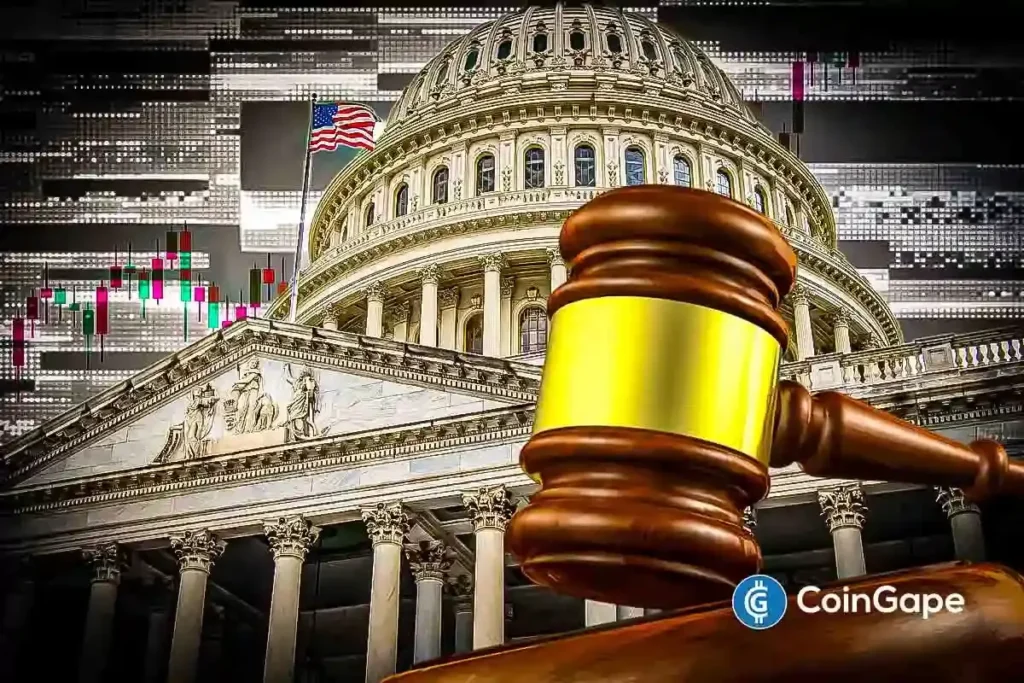Understanding the U.S. Senate’s Upcoming Crypto Market Structure Bill: A Comprehensive Overview
The U.S. Senate is on the verge of unveiling an updated draft of the much-anticipated Crypto Market Structure Bill, a significant piece of legislation that aims to clarify the regulatory environment surrounding digital assets. With digital currencies gaining traction and becoming increasingly integral to the financial landscape, this bill takes important steps toward creating a well-defined regulatory framework. The Senate Agriculture Committee is currently finalizing the commodities section of the draft, and it could be made public as early as this week.
Key Features of the Crypto Market Structure Bill
This draft of the Crypto Market Structure Bill establishes a new regulatory architecture for digital assets, aiming to delineate responsibilities among federal agencies. Central to this framework is the allocation of oversight duties between the Commodity Futures Trading Commission (CFTC) and the Securities and Exchange Commission (SEC). The CFTC will be charged with overseeing digital commodities and spot markets, while the SEC will retain governance over assets categorized as securities. This clear division is crucial for both regulatory compliance and informing market participants about their obligations.
The updated proposal brings a structured classification system for digital assets, segmenting them into categories such as digital commodities, investment contract assets, and permitted payment stablecoins. This classification is vital for clarifying which agency is responsible for each type of asset, while also setting expectations for compliance. It signifies a move toward a more modernized approach to asset regulation, reflecting the evolving nature of digital finance.
Recent Updates and Changes
Regular updates to the Crypto Market Structure Bill have allowed lawmakers to adapt the legislation in response to ongoing industry developments. The latest version of the draft introduces more precise definitions and protections for various types of digital assets, distancing itself from previous ambiguities. Notably, updates indicate that practices such as staking, decentralized physical infrastructure networks (DePIN), and airdrops will no longer be automatically classified as securities. This shift not only eases the regulatory burden on innovators but also acknowledges the complex variety of digital asset formats in the cryptocurrency landscape.
As discussions evolve, the potential impact of this bill on the market cannot be overstated. It suggests a future where innovators and creators in the cryptocurrency space will have clearer guidance, thereby fostering an environment conducive to growth and development.
Rise of Bipartisan Negotiations
After a period marked by partisan division, there has been a notable resurgence in bipartisan talks around the Crypto Market Structure Bill. Initial discussions faced derailment when Senate Democrats proposed expansive decentralized finance (DeFi) regulations through the CLARITY Act. This proposal sought to categorize DeFi protocol deployers as intermediaries, which drew criticism from Republican lawmakers and development communities who argued that it could stifle open-source innovation.
In recent days, however, both parties appear to have reached a point of conciliation. Following several roundtable meetings that brought together influential industry representatives— including executives from major platforms like Coinbase and Ripple—lawmakers have shown a renewed determination to progress swiftly. This collaborative atmosphere has heightened expectations that the bill could gain traction and earn legislative approval sooner rather than later.
Industry Stakeholder Perspectives
Industry leaders have been vocal about their support for the ongoing negotiations. Coinbase CEO Brian Armstrong has expressed optimism regarding the bill’s prospects, suggesting that a final version could be enacted by the end of the year. His comments, made from Capitol Hill, underscore the sentiment that lawmakers from both parties are increasingly aligned, with "90% alignment" on the core facets of the bill’s framework. This collaborative spirit gives stakeholders hope for a regulatory environment that not only promotes safety but also drives innovation.
The support from the industry reflects a collective desire for clarity around compliance and operational parameters as digital assets become integral to the financial ecosystem. Stakeholders regard the Crypto Market Structure Bill as a vital step in aligning regulatory standards with technological advancements in digital finance.
Implications for the Future of Digital Assets
As the U.S. Senate prepares to finalize and potentially pass the Crypto Market Structure Bill, its impacts on the digital asset landscape will be profound. By demystifying regulatory roles and establishing a clear compliance framework, the bill could pave the way for a more stable and innovative cryptocurrency market. Additionally, it holds the promise of enhanced legal protections for users, consumers, and innovators alike.
The anticipation surrounding the draft’s release speaks to the broader urgency within the industry for coherent regulations. As the digital landscape continues to evolve, having a robust regulatory framework will be essential for fostering innovation while mitigating risks associated with fraud and market volatility.
Conclusion: A New Era for Cryptocurrency Regulation
In summary, the impending release of the updated Crypto Market Structure Bill represents a pivotal moment in the ongoing effort to establish a comprehensive regulatory framework for cryptocurrencies in the United States. With significant changes aimed at clarifying the roles of the CFTC and SEC and ongoing bipartisan negotiations, the bill is seen as an opportunity to strike a balance between regulation and innovation.
As stakeholders in the digital asset space closely monitor these developments, the hope is that these regulatory efforts will not only enhance consumer protection but also strengthen the United States’ position as a leader in the burgeoning global cryptocurrency market. The coming weeks are critical, and as the discussions unfold, it will be fascinating to see how this legislation might shape the future of digital finance.


